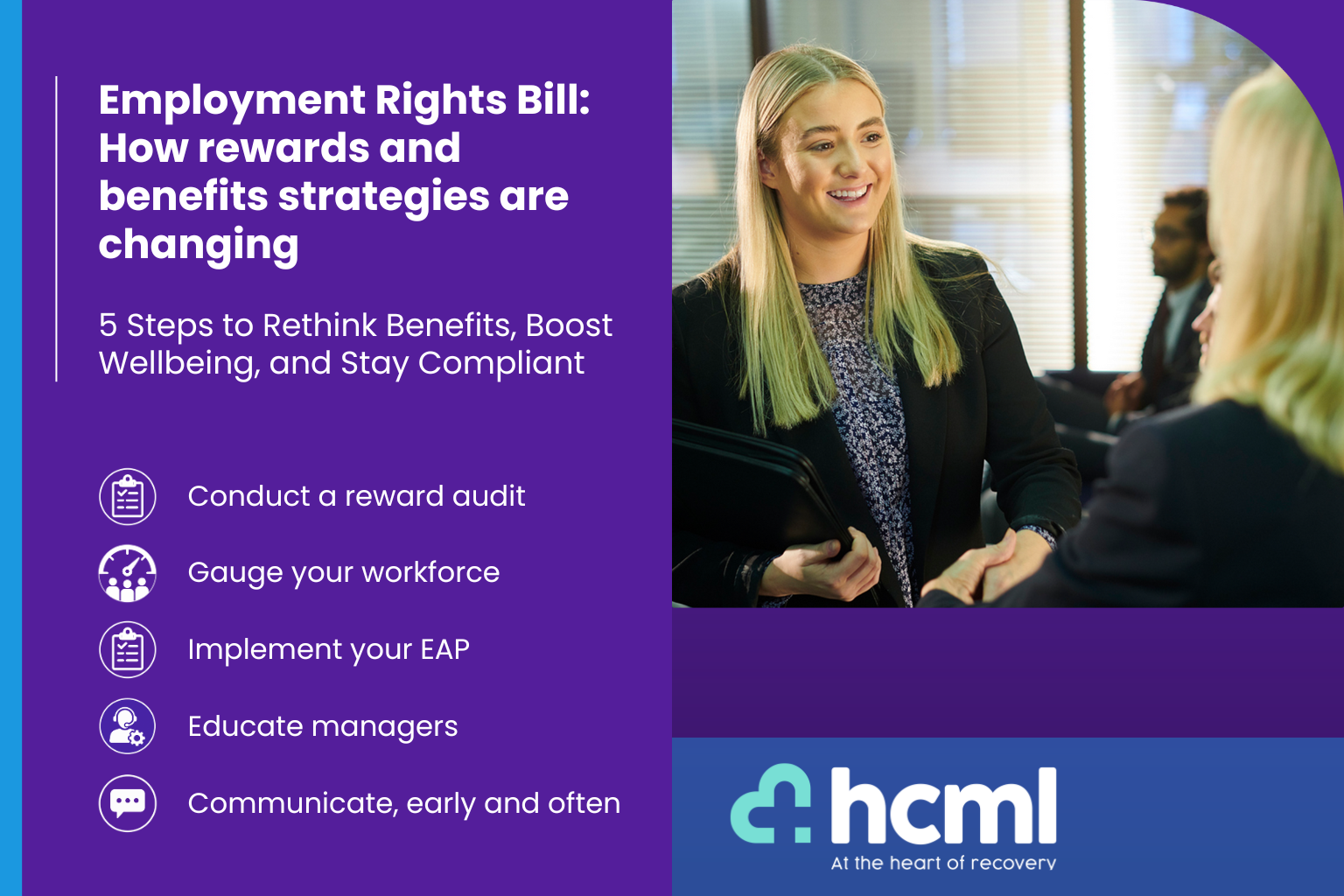
Employment Rights Bill: How rewards and benefits strategies are changing
Offering improved protection for employees, the Employment Rights Bill promises the most extensive reforms UK employment law has seen in years. It is aimed at strengthening protection for employees across a range of areas, including statutory sick pay, maternity and paternity leave, zero-hours contracts, redundancy consultations, and more.
The upcoming changes and their implementation bring a new era of transparency, flexibility, and fairness in the workplace. For HR directors, the impact of the Bill extends beyond meeting the legal requirements and has the potential to fundamentally transform how organisations approach reward and benefits.
Reward and benefits strategies have traditionally focused on attracting and retaining talent, supporting competitiveness, and aligning with business goals. In recent years, particularly post-Covid, these have evolved to reflect shifting employee expectations around wellbeing, mental health, and work-life balance and expanding HR’s role in promoting motivation, loyalty, and a positive employee experience. While these priorities remain essential, the Employment Rights Bill introduces new legal obligations that require a strategic rethink.
Greater focus on flexible working
Flexible working is moving from a nice to have, to a statutory right from day one of employment. Under the Bill, employers will be required to respond to flexible working requests quickly and transparently. Employees seek flexibility for a range of reasons, from childcare and caring responsibilities to managing health conditions or improving work-life balance. As a result, benefits strategies must evolve to reflect this new reality, embedded as a standard feature of the employee experience.
With this comes a need to rethink how roles are designed to accommodate different working patterns, training managers in how to support more flexible teams more effectively and how to provide clear career pathways. Having a more expansive and open approach to flexible working doesn’t just support compliance, it also enhances employee wellbeing, helps with recruitment and fosters a more productive and engaged work culture.
Bringing clarity to employment status
The Employment Rights Bill brings clearer definitions around employment status, with a proposed three-tier model: employee, worker, and self-employed, with associated rights and benefits clarified for each. For many employers, this means reviewing and defining how they incentivise different segments of their workforce around areas such as holiday pay, pensions, and other statutory benefits. This may mean creating tiered or flexible benefit packages that accommodate different worker statuses while still supporting wellbeing, loyalty, and performance.
The Bill means that businesses need to review how each level of employee can access voluntary benefits, including wellbeing programmes, financial education, or even limited-time access to Employee Assistance Programmes (EAPs) for non-permanent staff. This is a positive step forward that encourages a more inclusive and responsible approach for employers to adopt.
More family-friendly policies
The Bill will introduce new statutory rights for carers and expand parental leave entitlements, encouraging a more inclusive approach to employee benefits. Proposals include one week of unpaid carer’s leave per year, enhancements to maternity, paternity, and shared parental leave, and stronger protections for pregnant employees and new parents facing redundancy.
Forward-thinking employers can gain a competitive edge by going beyond the legal minimum, offering enhanced leave, childcare support, and family health benefits. In a values-driven talent market, these policies help strengthen your employer brand. HR leaders should review their benefits packages to ensure they meet evolving workforce needs, while clear communication is essential to boost awareness and encourage uptake.
What the bill means for employers
Reward and benefits policies are an essential component of a happy and valued workforce. Organisations that look beyond the compliance obligations of the Bill have a real opportunity to use their reward strategy to promote a culture of fairness, inclusivity, flexibility, and employee wellbeing. Those that do this effectively will reap the rewards of improved retention, stronger engagement and greater productivity from a workforce that feels supported.
Five steps to success
- Conduct a reward audit: Look at your current reward and recognition policies – review areas where your policies may fall short under the new legislation and work out which areas need prioritising.
- Guage your workforce: When it comes to benefits there is no one-size-fits-all approach and it’s important to offer a variety of initiatives so there is something for everyone. Consider the demographics of your workforce and what each group may need to full fully supported.
- Implement your EAP: Review your options and introduce a programme that works for the business. Keep it flexible and review its effectiveness regularly.
- Educate managers: Line managers will play a pivotal role in promoting the benefit and reward strategies and navigating employee needs. Ensure managers have the knowledge and training to do this effectively.
- Communicate, early and often: Ensure employees understand what is available to them and how to use it. Regularly signpost employees so know how to find the right support and make it accessible for all. The programme is only effective is employees know about it.
The Employment Rights Bill represents a significant shift in UK workplace legislation. For HR directors, it’s more than a compliance exercise — it’s a chance to future-proof reward and benefits strategies and help foster a more positive workplace culture. By aligning legal obligations with employee needs and organisational goals, HR leaders can build a more agile, inclusive, and high-performing workforce for the long term.











